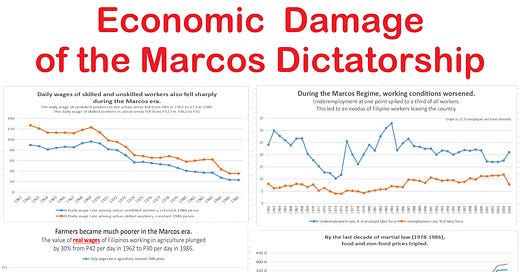How President Marcos became a Constitutional Dictator; The Economic Model for Alaska
Alaska(><)Philippines Connection 9
Upon being elected President of Philippines in September 1971 President Ferdinand Marcos used constitutionally legal powers and technicalities in his mandate to concentrate all state authority in himself and plunder the country financially. A People-Power Movement was required to finally extract Marcos from the presidency, requiring the USA to harbor him in Hawaii until his death September 28, 1989.
Perhaps the dictator should have been exiled to Alaska to see the difference
In 1972 Alaska was engrossed in preparing for the oil rush that would return our boom-and-bust economy to boom, with development of the Trans-Alaska Pipeline. But before we could build that pipeline we had to reach a settlement with Alaska Natives who had a land claim that went back to Alaska’s purchase from Russia in 1867 for $7.2 million. The Alaska Native Claims Settlement Act was signed in December of 1971.
This writer was attending Anchorage Community College then, which had just been relocated to a group of four buildings that would eventually become part of an extensive campus of the University of Alaska Anchorage. Previously this college had been a night school held at the original local high school but today it is a tremendous statewide money pit.
As they rubbed their palms together in anticipation of great wealth, very few Alaskans knew or cared what was going on in Philippines.
But in Southeast Asia Marcos orchestrated a Constitutional Convention in 1971--to review and propose amendments to the existing congress. On November 29, 1972 their proposed constitution was submitted by the President for ratification by the Filipino people.
And it passed.
[1]100 Years of the Alaska Legislature--1971
[2]100 Years of the Alaska Legislature--1978
Alaska was Devising ways to Distribute Resource Wealth to Alaskans while Pres Marcos was scheming to Exploit the Philippine People.
[3]100 Years of the Alaska Legislature--1980
In everything he did, Marcos took great pains to ensure that his actions would align with the dictates of the law. When necessary measures fell outside the scope of existing laws, he changed the laws to suit his needs before proceeding.
[4]Martial Law Museum
Pres. Marcos disrupted the essential democratic balance of power between executive, legislative and court system. While he already had control of the executive branch, as President, Marcos proceeded to take over all other functions that the government had mandate over. Marcos gave himself total control over the nation as Commander in Chief of the Military one year after he was initially elected. Ultimately honorable military leaders would take government back from Dictator Marcos.
Total Power by Any Means Possible
By taking control over the entire government, Marcos put himself in a position of absolute power over the laws of the land, with no legitimate body in existence to hold him in check. He personally appointed every provincial governor, city mayor, and municipal mayor throughout the nation. Throughout his term, Pres. Marcos issued 1941 presidential decrees, 1331 letters of instruction, and 896 executive orders. His word was law.
[5] Ibid Martial Law of the Philippines
To maintain an iron fist control over the Philippines required indefinite extension of Marcos’ power despite the 1935 Constitution’s limitation of the Presidency to a total of two 4-year terms. Marcos promulgated a change of the Constitution, repealing Congress with a single-chamber National Assembly composed of popularly elected legislators, a symbolic head of state in the President, and a Prime Minister who would be head of government, elected by the assembly.
As one of the top exporters of bananas in the world, Marcos turned Philippines into a Banana Republic Government
Keep reading with a 7-day free trial
Subscribe to DONN’s Observations and Insights to keep reading this post and get 7 days of free access to the full post archives.











